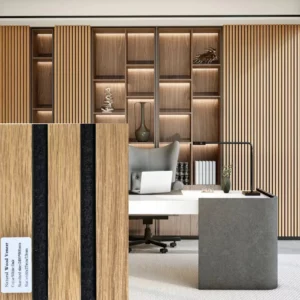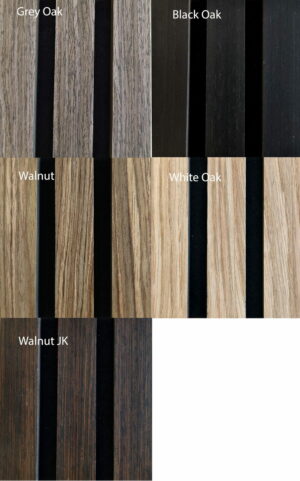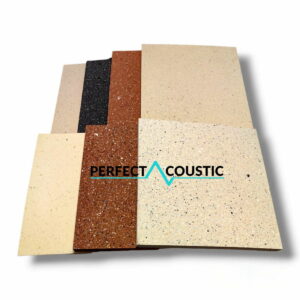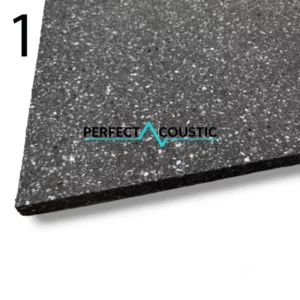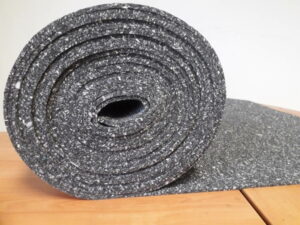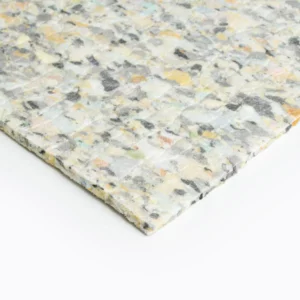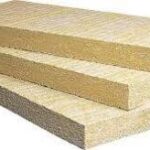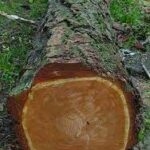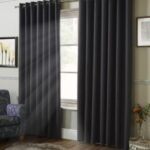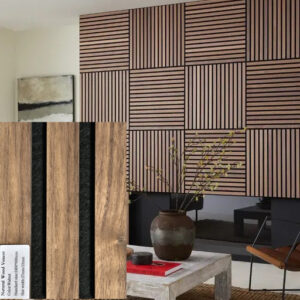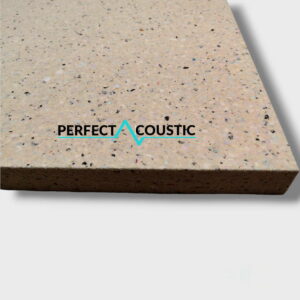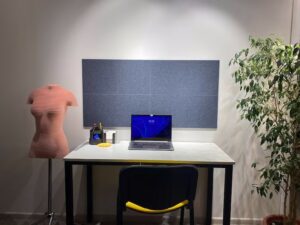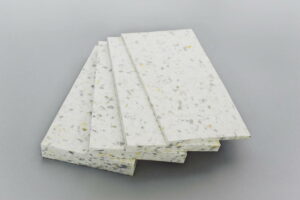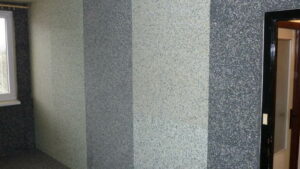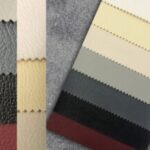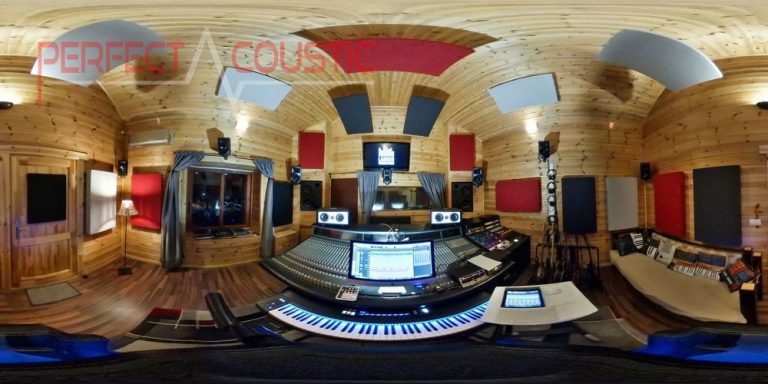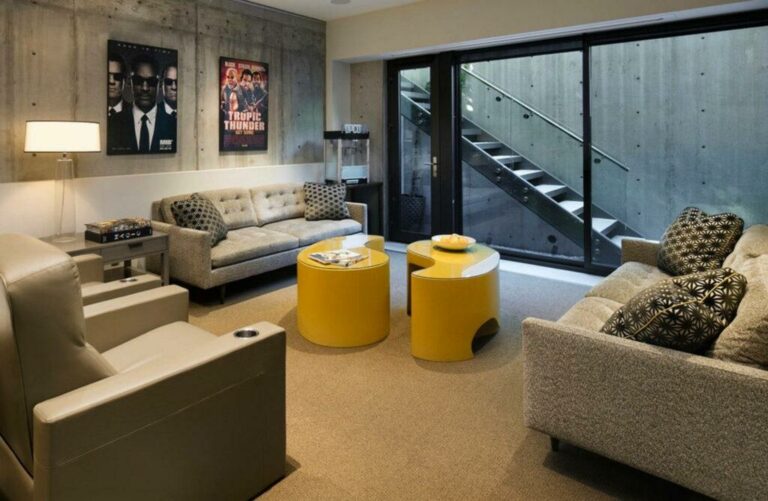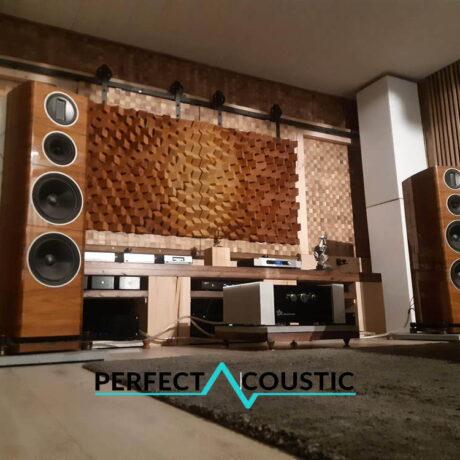Sound insulation materials:
An overview of the best soundproofing materials
There is no doubt that the soul of sound insulation and proper acoustics lies not only in form but also in design. The core of the whole thing is best given by the proper use of materials. It is useless to have a carefully, engineered soundproof panel if it is made of the wrong material. It is therefore worthwhile to go through the materials that are of outstanding importance in the field of proper acoustics and sound insulation.
None of the soundproofing materials work perfectly on their own
The secret of the most effective sound insulation lies in the fact that the panels are assembled from different layers – this not only absorbs the sound, but also distributes it properly on the surface. In addition, there is a frequent need for these panels to have a salon-like appearance. Most sound insulation can be needed not only in studios, but also in homes, cinemas and various workshops and meeting rooms. In addition, the need for adequate sound insulation in our own homes is much greater today, as the development of the private sphere has become increasingly important these days. Panels that work great in even such homes need to be both stylish and practical. However, it does not matter what materials are used. The following is a list of the most commonly used soundproofing materials to help you choose the right pieces in a truly understandable way. Whether it is panels, carpets or other accessories, we can choose from without choosing the right materials.
Acoustic silk and cotton
These are among the most versatile sound absorbing materials. Both are capable of absorbing sounds of significant intensity through their special training. Essential materials not only for the direct insulation of walls, but also for the production of various insulating panels and sound absorbers. Thanks to their easy-to-use properties, both are also perfect for creating panels that are not only extremely efficient, but equally aesthetically pleasing. Even for panels that stand their ground as works of art in their own right. The lining of such panels is largely acoustic leather or rock wool. Acoustic leather, on the other hand, can also be used as an outer cover. Its densely woven material allows it to absorb sounds per membrane. Therefore, it can be used as an important raw material for deep sound-absorbing membranes. With the help of acoustic leather, they also make bass traps that are almost completely capable of absorbing deep sounds. Styrofoam and acoustic foam alone can only absorb high tones on their own – in contrast to acoustic silk.
Pine
Pine is actually one of the collective names for the common pine. We are talking about a widely known type of wood, which is a very popular industrial wood. It is harder than spruce or larch, but has the light and easy-to-shape properties of pine. It is preferred because it is a durable yet easy-to-shape type of wood. Typical applications are in the furniture industry and horticulture. However, few people know that pine also has excellent sound-absorbing properties. This is due to the resin content typical of pines, which together with wood fibers act as a kind of layered, natural sound absorber. In addition to being a great sound absorber, it also provides an excellent aesthetically pleasing experience. A good look is often very important in a soundproof panel. Whether you want to soundproof a music studio or a room in a family house, pine-lined panels or all-wood diffusers provide a modern, special and unique look in any type of room.
PES and cotton blend
PES is an abbreviated name for polyester, which, when blended with cotton, is an excellent raw material for making acoustic curtains. Densely woven textiles are excellent for absorbing and absorbing sound at windows. Thanks to the cotton fiber structure, it not only softens but also prevents bounce. And PES provides adequate flexibility and drainage.
Sound-insulating materials include leather and imitation leather
One of the best soundproofing materials after cotton is natural leather. However, the textile leather version is much more common due to the cheaper price range. However, this does not change anything about the properties that genuine leather represents in the field of sound insulation. On the one hand, the textile fibers of artificial leather dampen the sound in a similar way, and on the other hand, premium quality artificial leather is used for sound insulation. Therefore, there is no difference in quality between them, at most they show some difference in terms of durability – so it is no coincidence that genuine leather is much more expensive. Not only is it natural and the cost of producing it raises prices, but so is its durability and longevity. You may want to choose from the above if you want to implement quality sound insulation.

